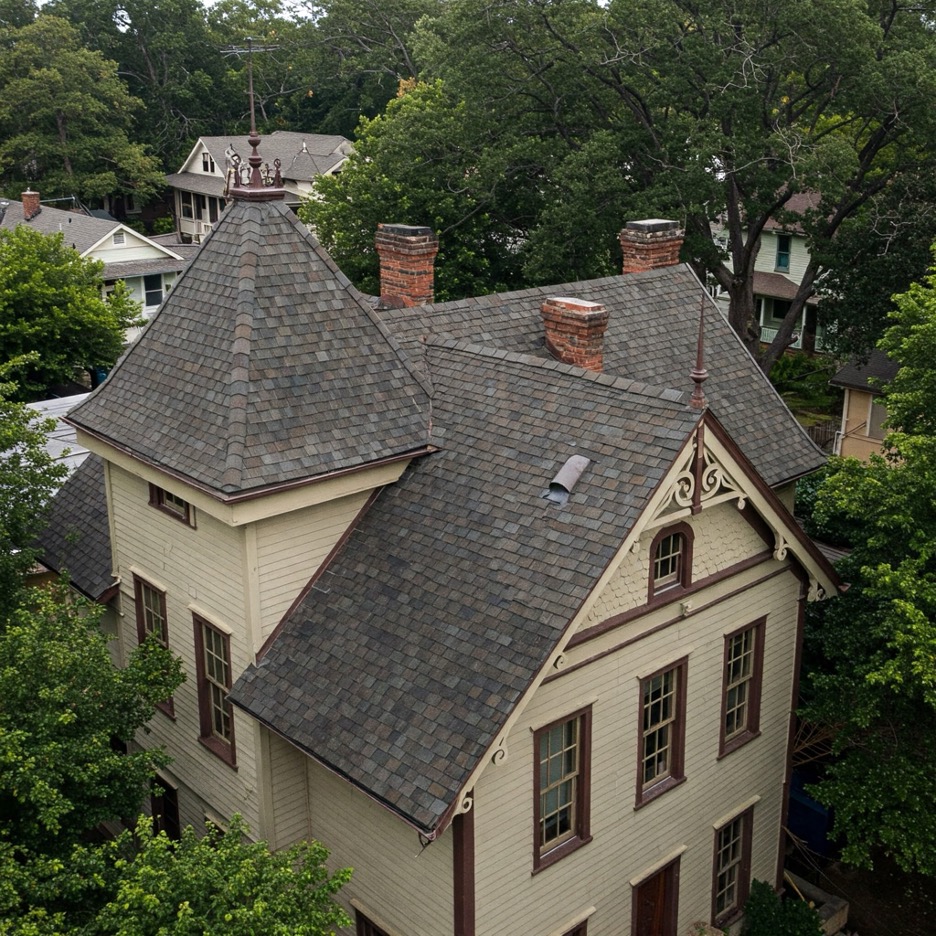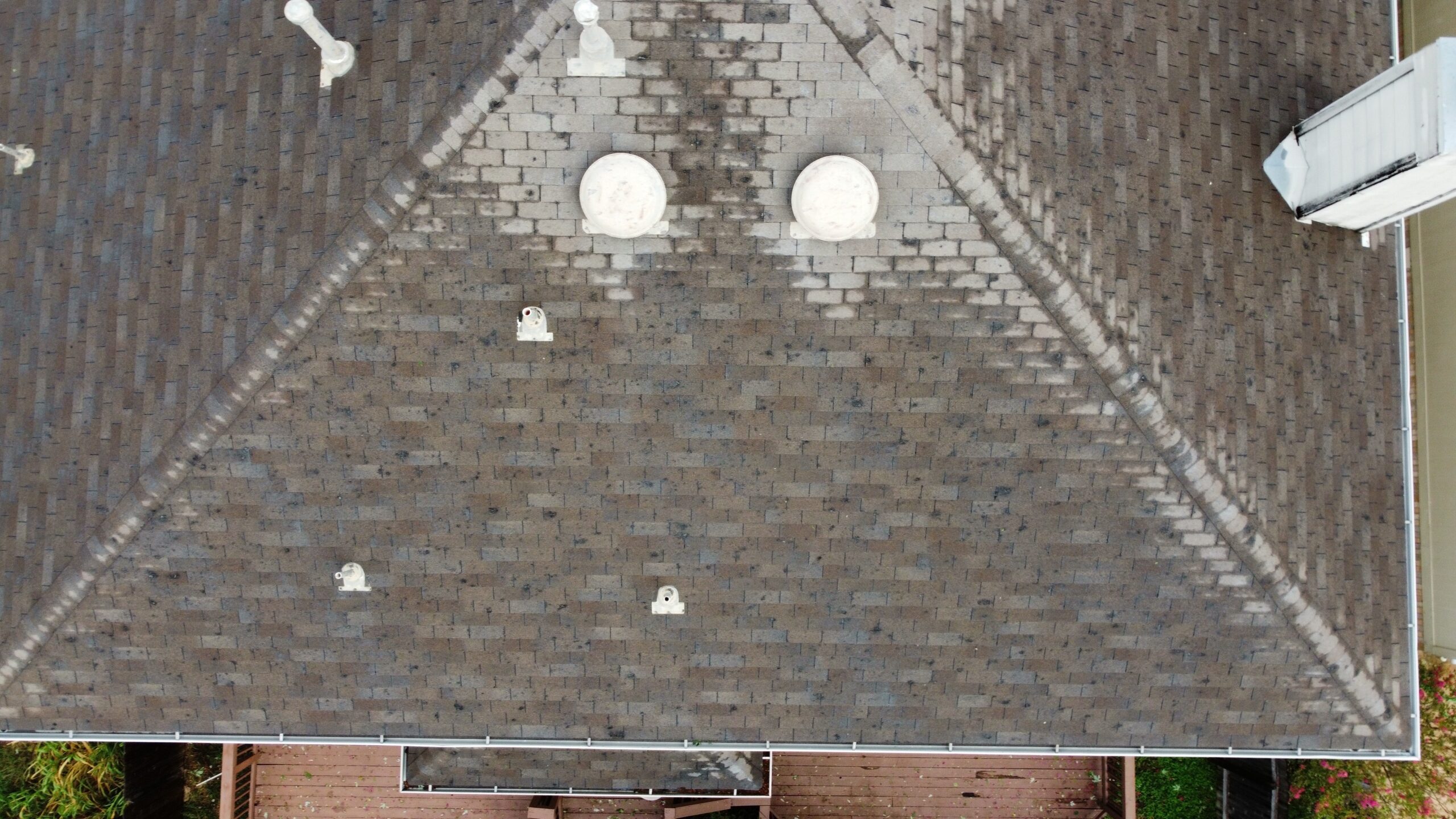Historic Home Roofing in Austin: Preservation and Modern Standards
Preserving Austin’s historic homes while meeting modern building standards presents unique challenges for homeowners and roofing professionals. Balancing authenticity with contemporary requirements demands specialized knowledge, careful material selection, and expert craftsmanship. This comprehensive guide explores the intricacies of historic home roofing in Austin, helping owners maintain their property’s historical integrity while ensuring modern protection.

Key Takeaways:
- How Do You Identify Historic Roofing Materials?
- What Preservation Guidelines Must Be Followed?
- How Do Modern Standards Apply to Historic Homes?
- What Material Options Meet Both Requirements?
- How Do You Choose Qualified Historic Roofers?
- What Permit Requirements Exist?
- How Do You Maintain Historical Accuracy?
- What Modern Improvements Are Allowed?
- How Do You Document Historic Features?
- What Funding Resources Are Available?
How Do You Identify Historic Roofing Materials?
Understanding original roofing materials and construction methods is crucial for authentic preservation. Historic Austin homes typically feature distinct materials and techniques that reflect their era of construction:
Pre-1900s Materials: Early Austin homes often showcased:
- Hand-split wooden shakes
- Natural slate tiles
- Early metal roofing
- Clay tile configurations
- Traditional built-up systems

Material Authentication Process: Professional preservation specialists employ several methods to identify original materials:
Detailed historical research including original building permits and architectural plans. Physical examination of existing materials using non-destructive testing methods. Analysis of construction techniques and fastening systems. Documentation of pattern layouts and installation methods. Comparison with other preserved properties from the same era.
Identifying original features requires understanding:
- Regional building traditions
- Historical material availability
- Architectural style requirements
- Local climate adaptations
- Period-specific craftsmanship
What Preservation Guidelines Must Be Followed?
Austin’s historic preservation guidelines establish specific requirements for roofing work on designated historic properties:
Local Requirements: The Historic Landmark Commission mandates:
- Material authenticity standards
- Design pattern preservation
- Color and texture matching
- Installation method compliance
- Documentation procedures
How Do Modern Standards Apply to Historic Homes?
Integrating contemporary building codes with historical preservation presents unique challenges. Modern requirements must be met while maintaining architectural integrity:
Safety Compliance: Current building codes require specific safety measures that weren’t present in original construction:
Fire resistance standards must be incorporated without compromising historical appearance. Structural reinforcement often needs subtle integration into existing frameworks. Modern ventilation requirements demand creative solutions that preserve aesthetic integrity. Weather resistance upgrades must complement original materials. Emergency access points require thoughtful implementation.

How Do You Choose Qualified Historic Roofers?
Selecting contractors for historic roofing requires careful evaluation of specialized expertise and proven experience:
Essential Qualifications: Historic roofing contractors must demonstrate:
Extensive knowledge of period-appropriate materials and techniques. Documented experience with similar historic properties. Understanding of preservation guidelines and regulations. Relationships with specialty material suppliers. Proven ability to match historical patterns and details.
Beyond standard roofing credentials, contractors should possess:
- Historic preservation certifications
- Specialized restoration training
- Period-specific craftsmanship skills
- Documentation expertise
- Project planning experience
What Permit Requirements Exist?
Navigating the permitting process for historic roofing involves multiple layers of approval:
Historic Review Process: Applications must typically include:
- Detailed material specifications
- Historical documentation
- Proposed modification plans
- Preservation method descriptions
- Impact assessments
The approval process involves:
Initial review by preservation specialists. Public hearing requirements in some cases. Material sample submissions. Site inspections and documentation. Final approval from multiple authorities.
How Do You Maintain Historical Accuracy?
Maintaining historical accuracy requires attention to numerous details:
Documentation and Research: Before beginning any work, thorough documentation includes:
- Photographic evidence of existing conditions
- Historical record research
- Material analysis reports
- Pattern and detail mapping
- Color and texture matching
Preservation Methods: Successful preservation involves:
- Careful removal of original materials
- Proper storage of salvageable elements
- Exact replication of patterns
- Authentic installation techniques
- Detailed record-keeping
What Modern Improvements Are Allowed?
While preserving historical authenticity, certain modern improvements can be incorporated:
Acceptable Modifications: Common approved updates include:
- Hidden waterproofing systems
- Improved insulation methods
- Modern flashing techniques
- Enhanced ventilation systems
- Updated drainage solutions
How Do You Document Historic Features?
Documentation serves as a crucial element in historic roof preservation, providing both historical record and guidance for future maintenance:
Comprehensive Documentation Process: Professional documentation requires multiple approaches:
Detailed photography of all architectural elements with specific attention to unique features and craftsmanship. Three-dimensional scanning technology to create precise digital records of complex details. Written descriptions capturing construction methods and material specifications. Measured drawings documenting exact dimensions and patterns. Material samples preserved for future reference and matching.
The documentation should include:
- Original construction techniques
- Previous restoration efforts
- Material evolution over time
- Pattern and detail variations
- Historical modifications
What Funding Resources Are Available?
Historic home owners can access various funding sources for roofing preservation:
Government Programs: Several assistance options exist:
- Federal tax credits for certified renovations
- State preservation grants
- Local heritage funding programs
- Historic district incentives
- Energy efficiency rebates
Private Funding Sources: Additional resources include:
- Preservation society grants
- Heritage foundation support
- Community development funds
- Historic trust programs
- Private preservation endowments
Qualifying criteria typically involves:
Demonstration of historical significance. Commitment to preservation standards. Detailed project planning and documentation. Professional contractor involvement. Regular maintenance agreements.
Future Considerations and Maintenance:
Long-term preservation requires ongoing attention and planning:
Maintenance Schedule: Establish regular:
- Professional inspections
- Preventive maintenance
- Documentation updates
- Material condition assessments
- Preservation plan reviews
Energy Efficiency: Meeting contemporary energy standards while preserving historic character requires:
- Innovative insulation solutions
- Hidden ventilation systems
- Discrete moisture barriers
- Advanced underlayment materials
- Strategic climate control integration
What Material Options Meet Both Requirements?
Modern manufacturers now offer materials that satisfy both preservation standards and current building codes:
Hybrid Solutions: Advanced materials that combine historical accuracy with modern performance:
- Synthetic slate with authentic appearance
- Composite shingles matching original patterns
- Modern metals with traditional profiles
- Enhanced clay tile formulations
- Engineered wood products
Selection Criteria: When choosing materials, consider:
Historical accuracy in appearance and installation patterns. Modern performance capabilities including weather resistance. Longevity and maintenance requirements. Cost-effectiveness and availability. Approval status with preservation authorities.
These materials must demonstrate:
- Visual compatibility with original materials
- Superior durability compared to historical options
- Improved safety characteristics
- Enhanced weather resistance
- Easier maintenance capabilities
Preserving historic roofing in Austin represents a delicate balance between maintaining architectural heritage and ensuring modern functionality. Success requires understanding both historical construction methods and contemporary building standards, while working with qualified professionals who appreciate the unique challenges of historic preservation.
Long-Term Success Factors:
- Regular professional assessment
- Proactive maintenance planning
- Detailed record-keeping
- Relationship with qualified contractors
- Understanding of preservation requirements
Best Practices for Homeowners:
Historic home owners should:
Maintain comprehensive documentation of all roofing work. Establish relationships with qualified preservation specialists. Stay informed about preservation guidelines and requirements. Plan for regular maintenance and inspections. Budget for both routine care and major preservation efforts.
The Future of Historic Preservation:
As preservation technology continues to advance, homeowners can expect:
- Improved material options
- Enhanced documentation methods
- Better preservation techniques
- More funding opportunities
- Greater support resources
For Austin homeowners maintaining historic properties, proper roof preservation remains essential to protecting both their investment and the city’s architectural heritage. By understanding and following appropriate preservation guidelines while incorporating necessary modern standards, these important historical structures can continue to serve and inspire future generations.







